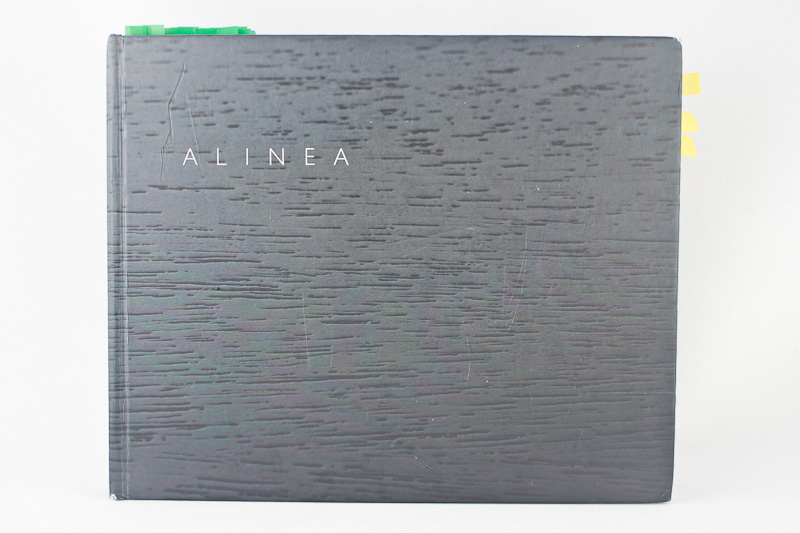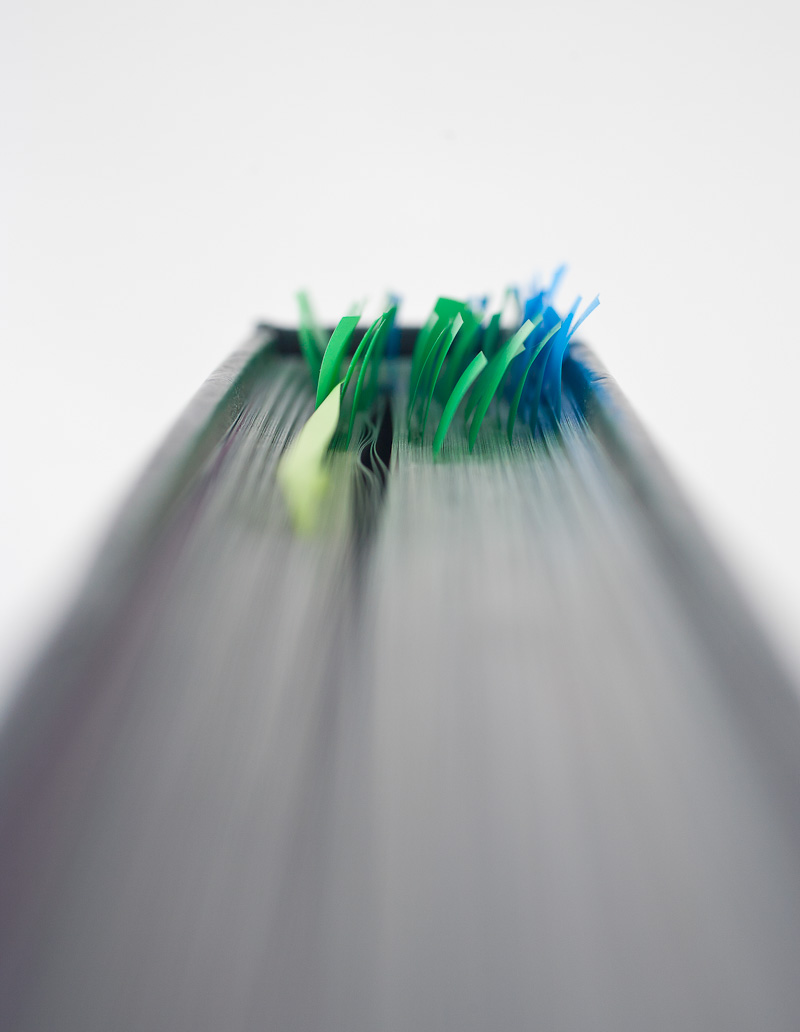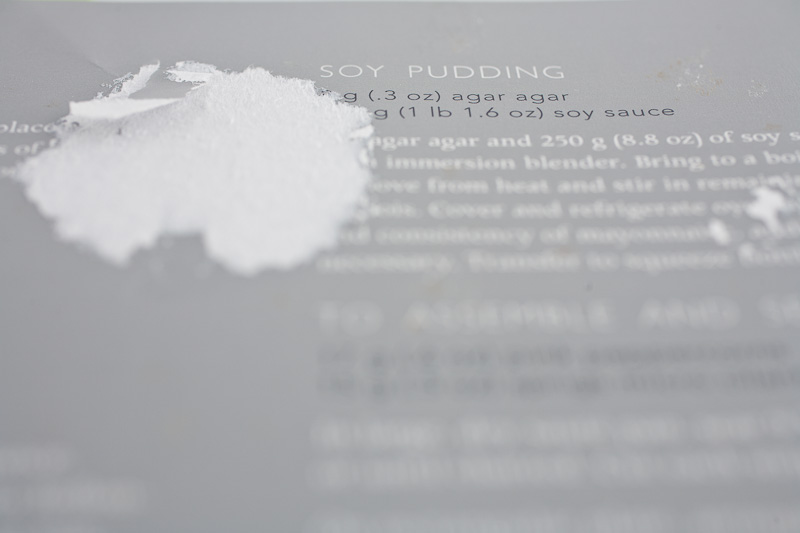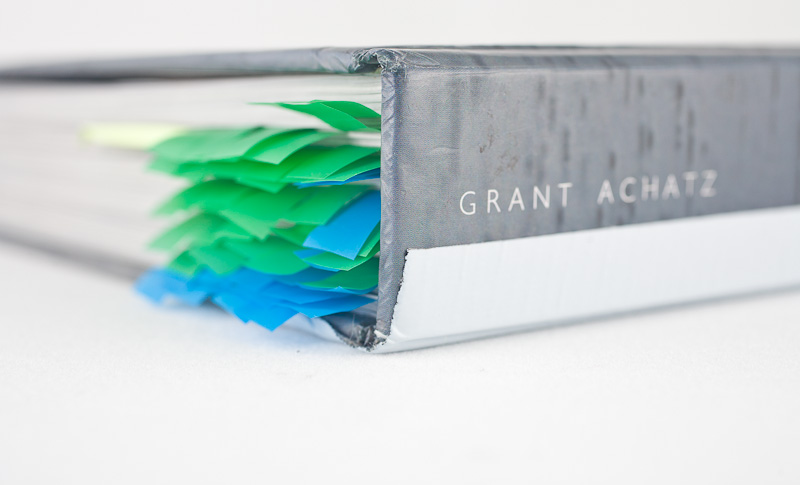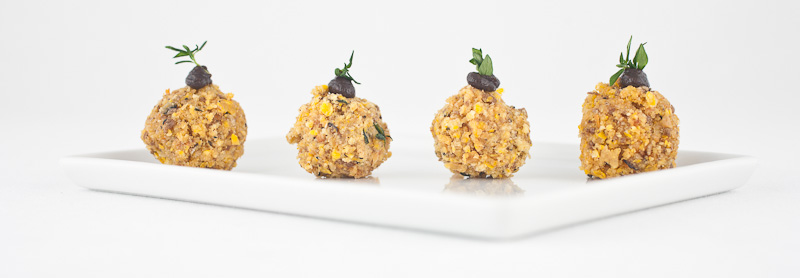Or: How I Learned A Whole Lot About Truffles
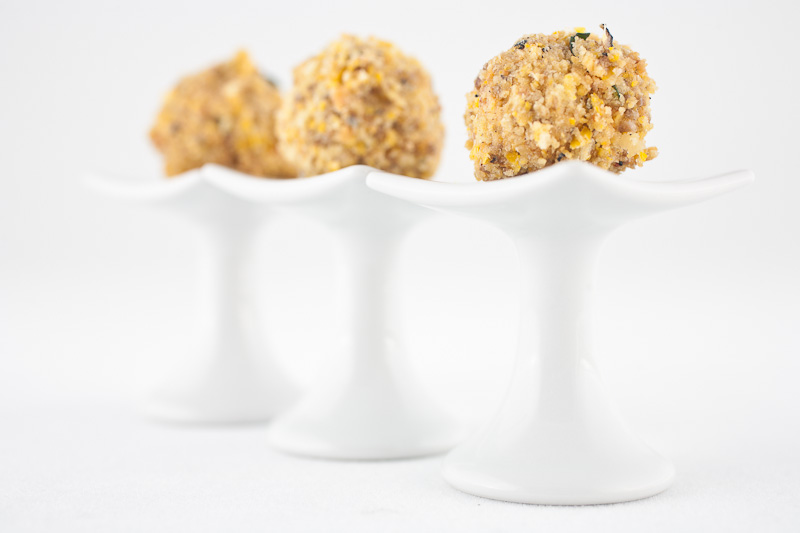
I think this is the only recipe in the Alinea cookbook to feature chicken. The paltry commonality of the chicken is offset by using only the most delicious parts of it (the skin and fat), preparing it with traditional (and unarguably-delicious) flavors, then adding a shitload of truffles. This is the story of my dealings with a shitload of truffles.
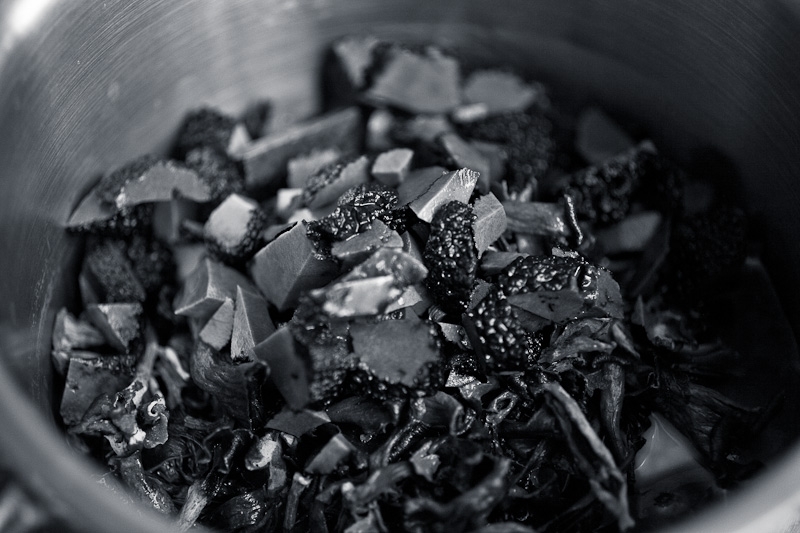
In New Zealand I learned a small bit about truffles from the very nice and knowledgable man (I can’t recall his name) at Truffle of Cuba St. From him I bought a black truffle in a small glass jar, which I used in Hot Potato, Cold Potato.The truffle was a preserved one, and he warned me that while it would be good, it was ‘but a shadow’ of what a fresh truffle tasted like. I figured at the time my taste hadn’t developed enough for me to be able to tell a difference, and at any rate I didn’t really care very much. So I bought the preserved one and forged on with the dish. I remember it being predominantly…boring. I didn’t understand what the fuss was about.
This recipe calls for a grand total of 12oz of fresh black truffles in various states of wholeness. A large amount of fresh black truffle peelings are used to make a truffle stock. Another handful are pureed with the stock and some black trumpet mushrooms into a truffle puree. And finally, a small bit of fresh truffle is minced up into fine truffle mince. Even knowing as little as I did, that scale was enough to demand some care and attention paid to researching how to do this…starting with figuring out what a fresh truffle was. The recipe specifically calls for “Perigord” truffles, which I thought maybe was either a brand or a type. Wrong so hard! Perigord is a region in France in which a particular type of black truffle grows (Tuber melanosporum). There are also white truffles (Tuber magnatum), the swankiest of which grow in the Alba region of Italy, and which represent the absolute most expensive kind of truffle one could buy. Talking about white truffles is an adventure for another day though.
Perigord black truffles grow beneath oak and hazelnut trees, and come into season in winter (so they’re often referred to as “Winter black truffles”). They are reputedly very aromatic, with deep dark pungent earthy notes. Of the black truffles that exist in the world, Tuber melanosporum are the bad-assest. I’ll refer to them here, then, as “Batman Truffles”. I started making rounds trying to find places that would sell fresh Batman truffles, but because it’s the middle of summer, I didn’t get very far. There ARE fresh black truffles to be found, however, and this confused me a little until I did some more research. Turns out there’s a wimpier variety of black truffle, Tuber aestivum, that grows in various parts of Europe and is in season during summer months. The truffle is less aromatic/flavorful/pungent, and seems like what you’d use when you can’t find Batman Truffles. So, I’ll call these Robin Truffles.
Finding fresh Robin Truffles (now that I knew what they were) is a little easier at the moment. Last summer I remember seeing them in Monterey Market in Berkeley. Monterey Market is a bit of an oddity; it seems like it should be a nice quaint little grocery store–the produce section spilling out into the parking lot looks inviting and tasty–but I inevitably never seem to find what I’m looking for when I go there, so I’ve tended to avoid it. Finding fresh truffles might redeem it a bit for me, so I drove up after work to see what I could find.
Sure enough, tucked away in their haphazard “tuber aisle” were some take-out containers filled with about an inch of rice and some moldy black truffles. They seemed priced haphazardly (truffles are supposed to be priced by the ounce…these all had very even numbers like “$20”, “$35”, etc), and were labeled simply “black truffles” (no origin or date for freshness was given). I cracked the lids of a few and sniffed…one smelled like rotten potatoes, another smelled like nothing. Still not really knowing what I was doing or what I should be looking for, I grabbed a few that smelled the least offensive and checked out. The Asian teenager behind the register raised an eyebrow and looked at me skeptically when I rolled up with $100 worth of their truffles, and said something I couldn’t understand to the bag boy working the register. By the time I’d made it to my car I was already heavily second-guessing myself, so I pulled the truffles out and inspected these things more carefully. They were very spongy, very dry, and didn’t smell like anything. I know rice absorbs moisture, and I’d learned truffle potency (and therefore freshness) is based largely on water weight. I’d also learned fresh truffles have a shelf life of about a week once harvested, and there was no indication of how long these had been sitting on Monterey Market’s sad-looking shelves. So I was pretty skeptical. I decided to try slicing into one with my pocketknife…the blade squeaked and a little dust poofed out.
After a bit more confirmative investigation on my phone, I decided these things weren’t likely very useful for much of anything, so I took the truffles back in the shop to return them. The same girl who rang me up when buying them giggled when I said I wanted to return them, and made a comment about how I must have realized I couldn’t afford them. Awesome. “Oh, no no no,” I explained, “I’m returning these because your shitty Robin Truffles aren’t even, like, a good Robin. These are like Chris O’Donnel Robin Truffles.” I suppose I could chalk the experience up to a breakdown in communication, but instead I decided to conclude that Monterey Market is a shithole den of snakes.
Ugh. I drove home frustrated. It’s not like this project isn’t hard enough as it is, now I have to worry about being swindled when buying super-expensive ingredients. Backtracking a little, I started doing more research. I came across one online shop that seems pretty legit: D’Artagnan, Inc. They sell fresh Robin truffles, but also sell canned/preserved variations of both Robin and Batman truffles. They also sell Batman truffle juice. Huh. This recipe is actually telling me to make truffle juice from fresh truffle peelings…should I just buy the juice? Should I try making my own juice from canned truffles? Should I opt for canned peelings or canned whole truffles? Clearly, some science would inevitably need to be done here.
To further confuse things, there’s a place in the SF Ferry Building that deals in selling truffle products. I called them and found them to be much more helpful than stupid fartface Monterey Market. They currently carry both fresh Robin truffles at $28/oz, and (AND!) Australian Batman Truffles for around $125/oz.
Holy Truffle, Batman!
Given how much truffle this recipe uses, I concluded that spending $1500 on proper winter truffles, as directed and likely-intended, was simply a threshold I could not cross. Even spending around $350 on the lesser summer truffles is an expense I can’t afford. This is the first point in this project that I’ve arrived at this point: something is simply too financially-prohibitive to pursue. All options at this point are compromises, and I’m too inexperienced to know what the best of my options are.
I decided to hedge my bets. While I could easily just buy winter truffle juice (at $85 a can), I’m stubborn and want to try making my own. For this I’d try using canned truffles. I’m also to mince up some fresh truffle into the final chicken skin ball mixture…for this I’d use a fresh Robin Truffle.
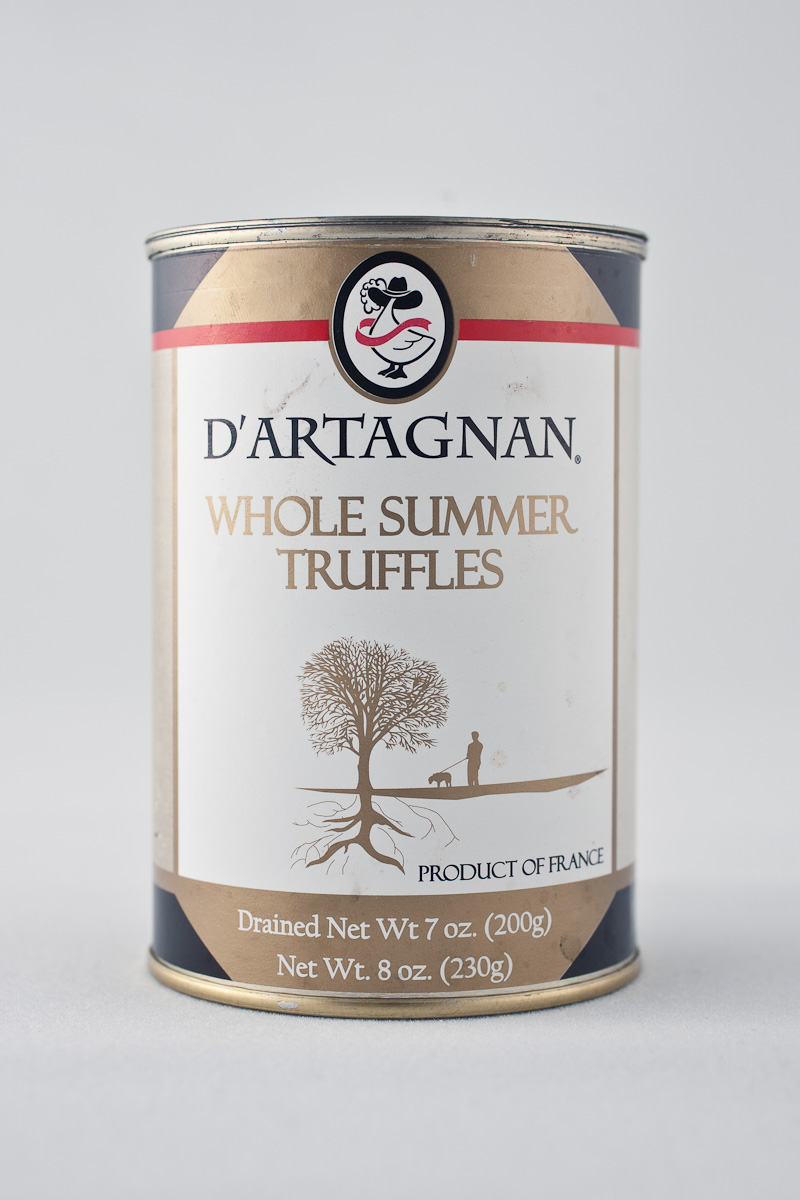
So I ordered a can of preserved summer truffles from D’Artagnan; they showed up a day later. I’m meant to pressure cook these. I’ve wanted a pressure cooker for a whole, after seeing it used to make so many neat things on shows like Top Chef. Sarah wasn’t quite on board with this, but she did like the idea of getting a slow-cooker, since we both work such long hours each day. We compromised beautifully with this handsome little devil. It’s a combination slow cooker/rice cooker/pressure cooker rolled into one.
Operating the cooker is pretty simple; I threw in some water and my full can of whole truffles (I chopped them up first), then set the pressure and a time limit and waited. After an hour or so, I cracked the lid to get a waft of…pretty mediocrely-pungent truffle stock. I was expecting to be blown away, but the stock tasted more watery than truffley. The recipe says I can leave the stock with the truffles in the fridge for up to days to maximize flavor, so that’s what I did. After 3 days, I cracked the lid and breathed deeply…to get another waft of super-weak-smelling stock. At this point I knew my bet about buying canned truffles was wrong. Canned truffles are pre-boiled before being canned, and I bet the resulting liquid is canned as truffle juice. What I had smelled and tasted weak. I cooked it for a while to reduce it and punch up the flavor a little. This kinda-sorta worked, but I still couldn’t shake the feeling that I had drifted pretty far from the master recording of the tune. We call this “Learning The Hard Way”.
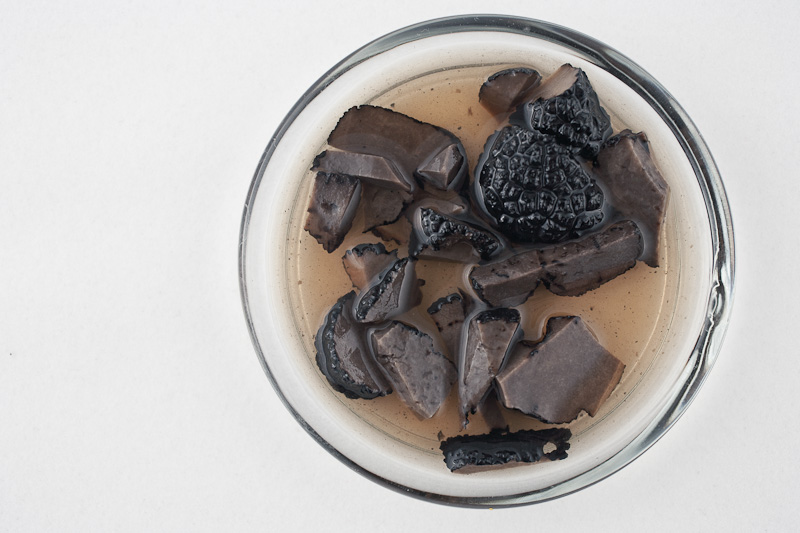
The truffle stock ultimately needs to be blended with fresh black trumpet mushrooms. Black Trumpets are in season in the spring, at which point they are the most amazingly delicious things ever. Since I couldn’t find any fresh ones, and since I planned to go to the Ferry Building to buy a fresh truffle anyway, I decided to roll the two into one and see if the ferry building shop had dried black trumpets. So off I went.
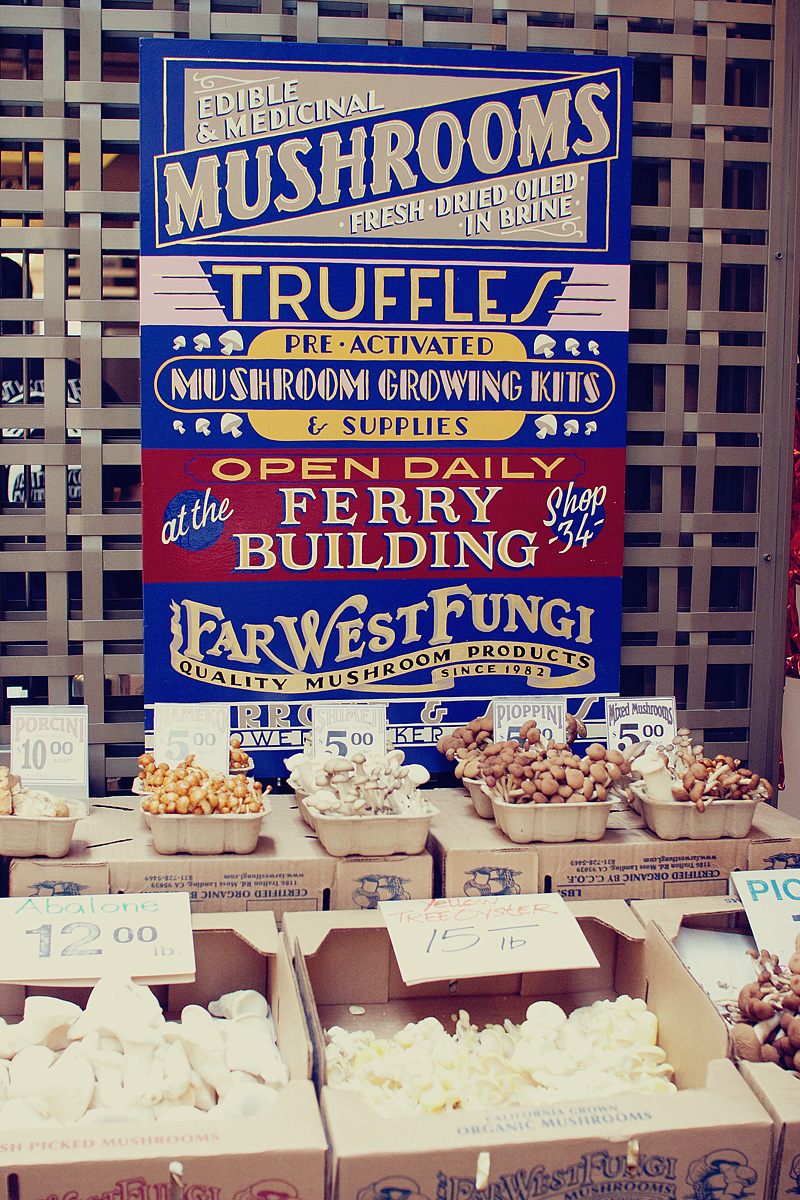
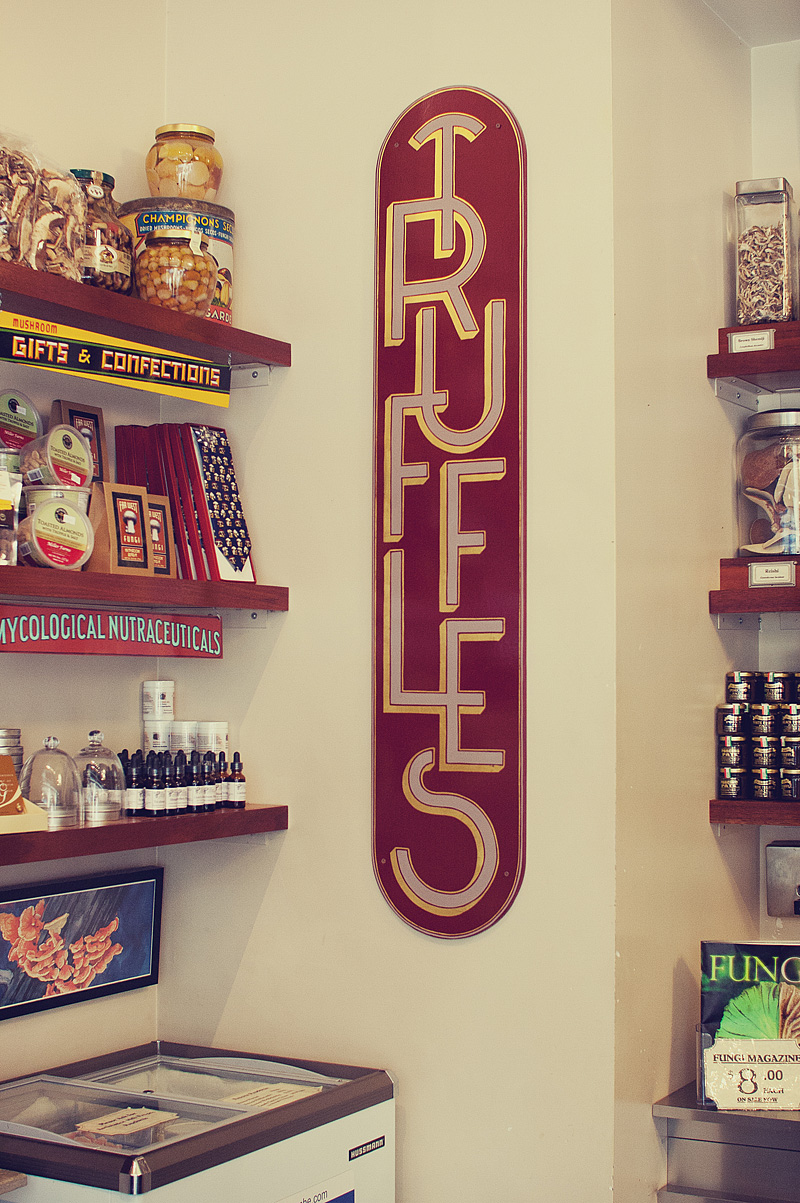
Far West Fungi is a frustratingly beautiful little shop. I say “frustrating” because every time I visit I want to buy everything, and everything is expensive. You can immediately tell the place is legit though; every mushroom in the place is pristine and in tip-top shape. I met up with James before this adventure; James knows a shit-ton about food and also likes geeking out about things like buying a fresh truffle as much as I do. Sarah was with us as well, and documented the excursion.
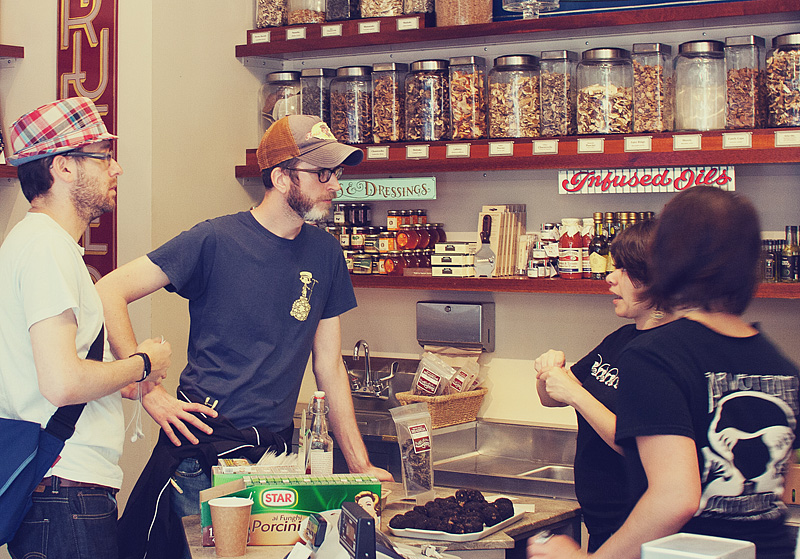
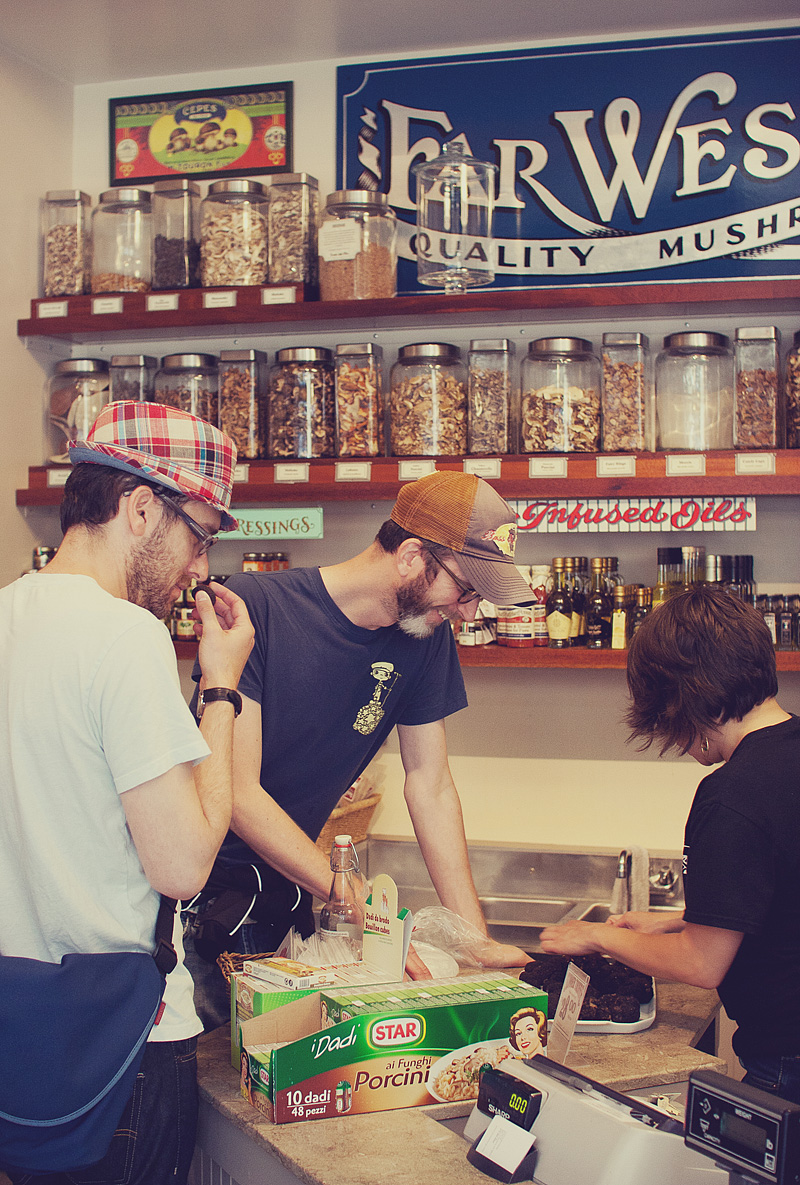
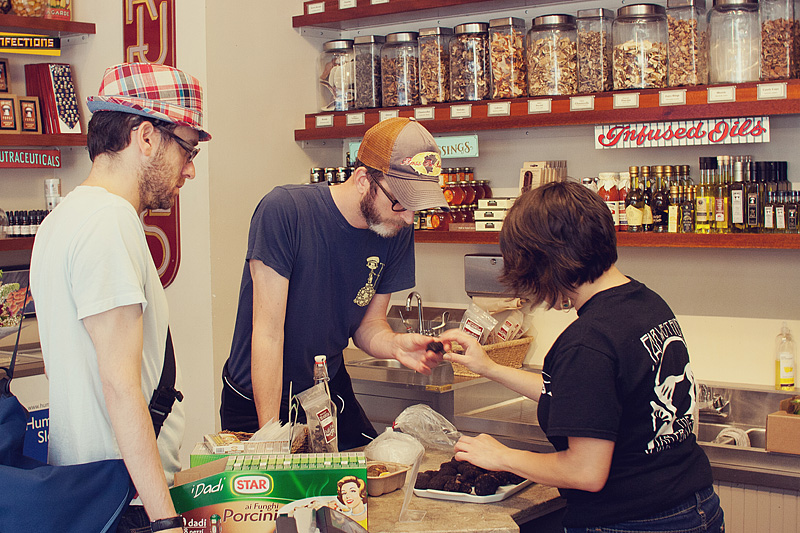
Aided by a very friendly and enthusiastic employee, we went about selecting the perfect fresh truffle. This experience was clearly different from my experience at butthead jerkstore Monterey Market. “How fresh are these?” was my first question.
“Oh, most of these came in yesterday. So most of them are extremely fresh. How soon do you intend to use your truffle?”
“Today, tomorrow maybe.”
“Ok, in that case we actually want to pick one that’s not quite as super-fresh, one that’s opened up a little. You can tell how fresh they are by sniffing/squeezing them. Brand-new ones are very firm, while ‘riper’ ones have a little give to them,” the girl said while fondling through the pile of truffles. “You buy yourself some time by getting a super-fresh one, sort of like buying an avocado.”
“When I buy this, how do I care for it before using it? Wrap it up in a damp paper towel?”
“Oh no no, you don’t want to wrap it in something wet, you want to keep it away from water, and you absolutely want to keep it cool until ready to use. Then you slowly bring it up to room temperature…that helps the aroma come out.”
I didn’t have a cooler or anything on me, but James suggested snagging a bag of ice from a nearby fishmonger, which worked brilliantly. The girl wrapped my selected truffle in a dry brown paper towel, sealed it in a bag, and told me to keep it cool until ready for use.
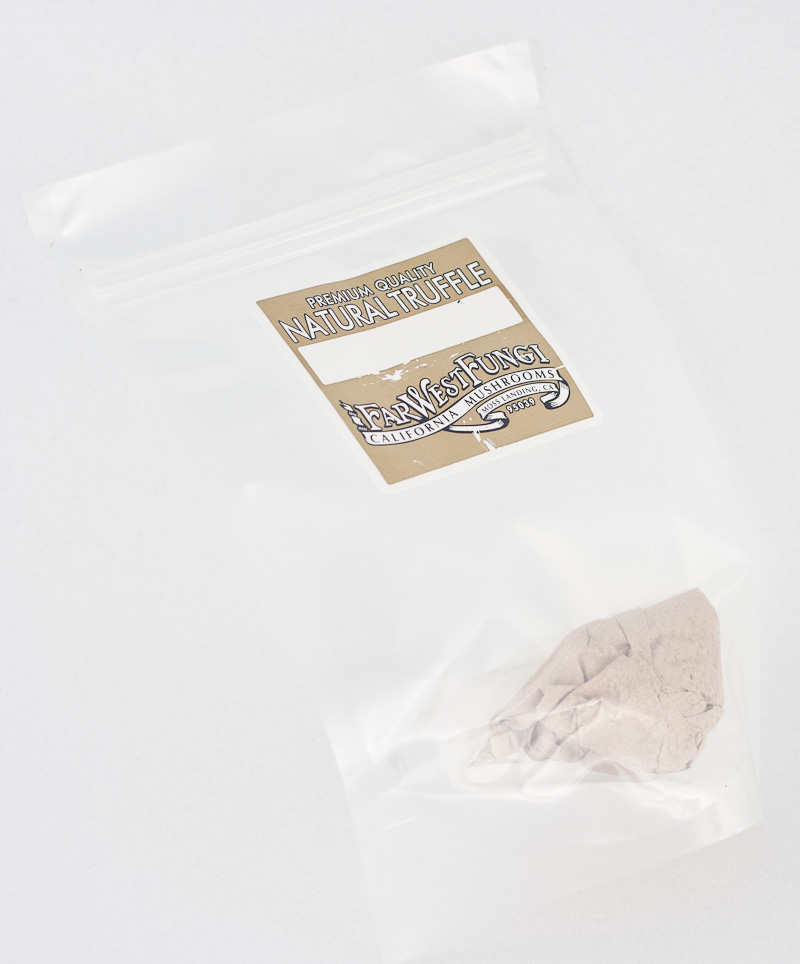
Supremely happy with this purchasing experience (unlike my experience with farty fartballs Monterey Market…I can’t overstate how farty fartballs they are), I took my lovely new truffle and a bag of dried black trumpets home to get to work. The black trumpets, truffle stock, and some of the canned truffles were mixed with some mushroom stock I’d also made earlier, and pureed in a blender until smooth.
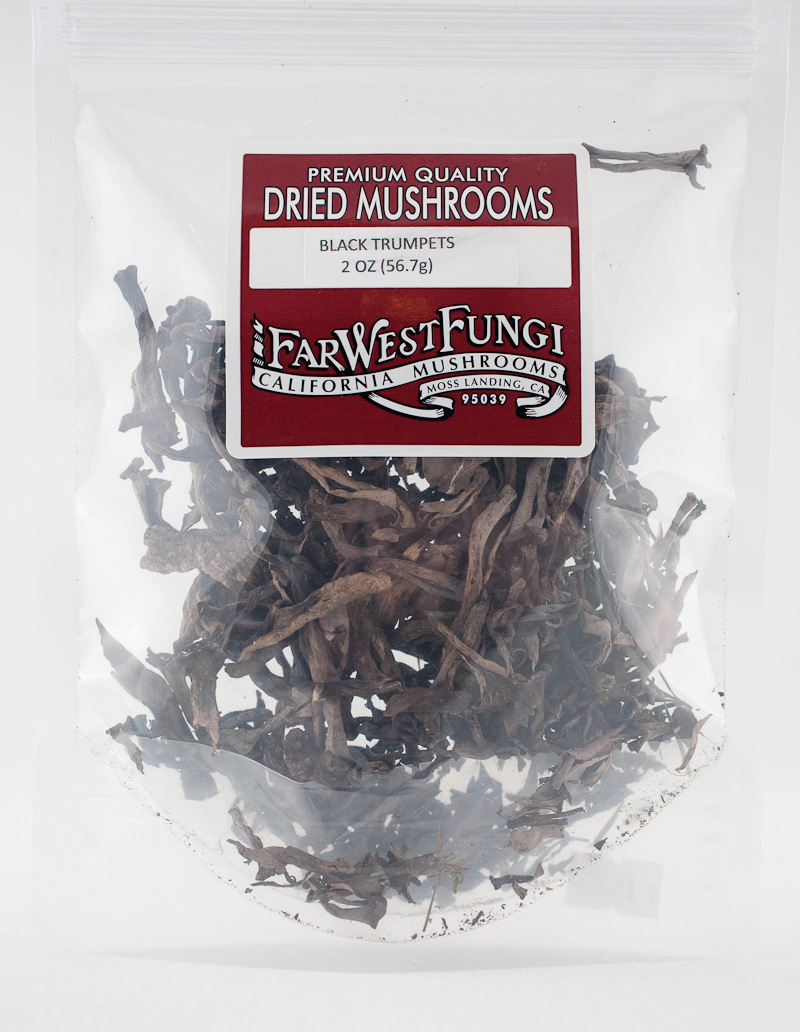
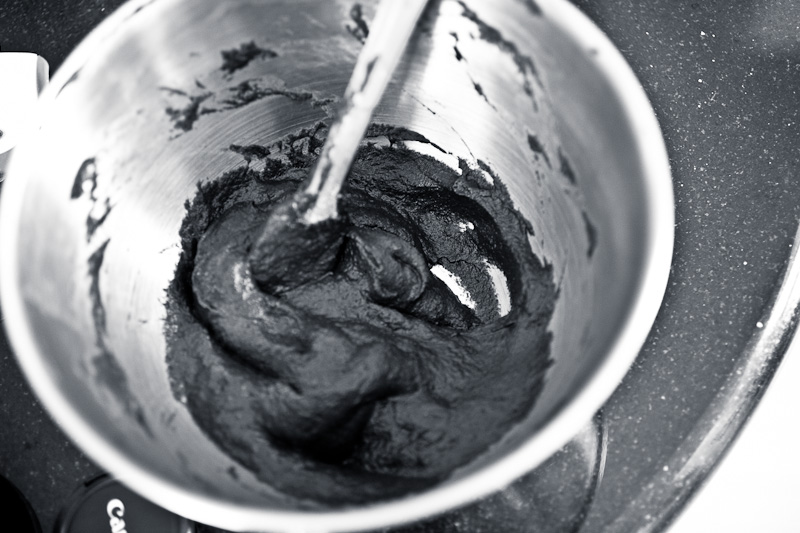
After pushing the puree through a chinois to get it as smooth as possible I tasted it. It tasted…incredibly boring. INCREDIBLY BORING. At this point all I could really do was shake my head; I felt super-confident the boringy taste was a product of using canned (not fresh) truffles to make my stock, canned truffles in the puree, and dried black trumpets instead of fresh ones. Crap. I added some salt and that kicked things up a little, and I made a last-minute run to the store to get a small bottle of black truffle oil, thinking that I could use that to cheat things into place, but even then this whole thing tasted, well, like a shadow of what I felt it was supposed to.
I was especially sensitive to this because all of this effort, hundreds of dollars and several weeks’ worth of research boiled down to this:
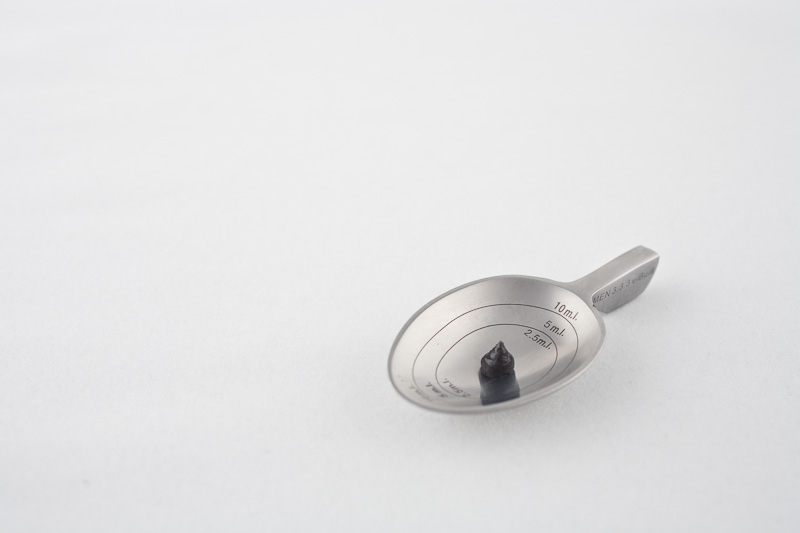
That’s right. One tiny pea-sized drop of this. And, here, watch watch, check out what I’m gonna do to it:
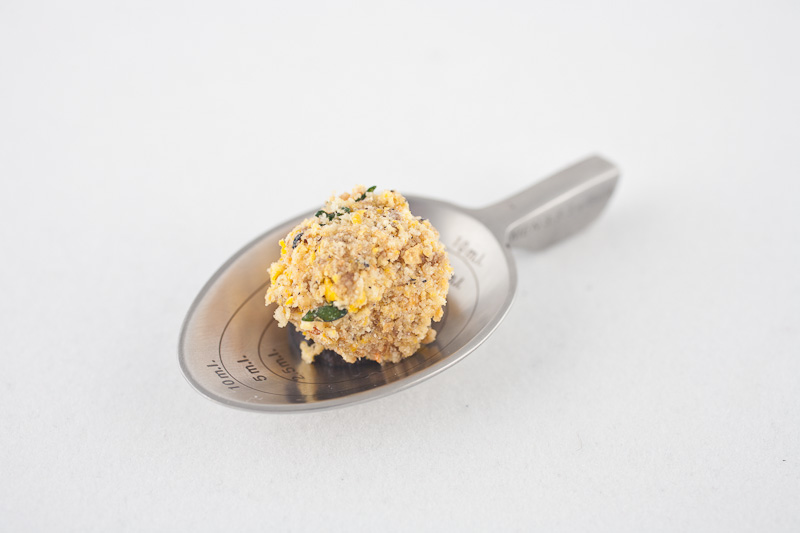
That’s right. You can’t see it. It’s totally covered by the Main Event, which means you have to–HAVE TO–taste it fiercely. It should be explosive and beautiful and delicious, and no amount of cajoling from me could whip it into anything better than “Huh. Yeah I guess that’s pretty ok. I guess.”
Perhaps oddly, I didn’t feel terribly down on myself for this; I feel like I did the best I could, but the ingredients I used just weren’t what they needed to be, and the ingredients I needed are too far outside the realm of reasonable reach for me to use. Like I said, learning the hard way.
But whatever, I’ll talk about the rest of it now, because the rest of it was kick-ass. The main sphere there is made of chicken skin, corn, chicken fat powder, toasted bread with olive oil, and thyme. Using my newly-found butchery skills, I expertly relieved a nice little chicken of its skin.

The chicken skin (and some extra fat, for delicious good measure) are combined in a saute pan with some thyme and garlic, and cooked over very, very low heat for a while.
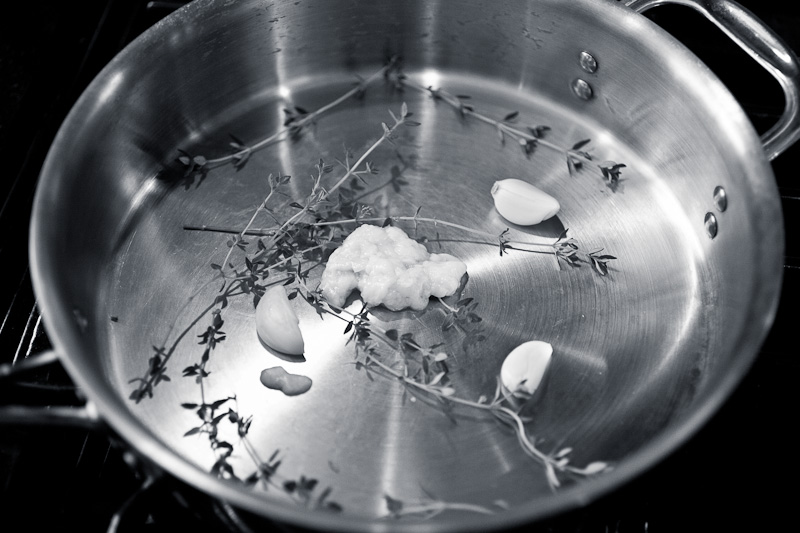
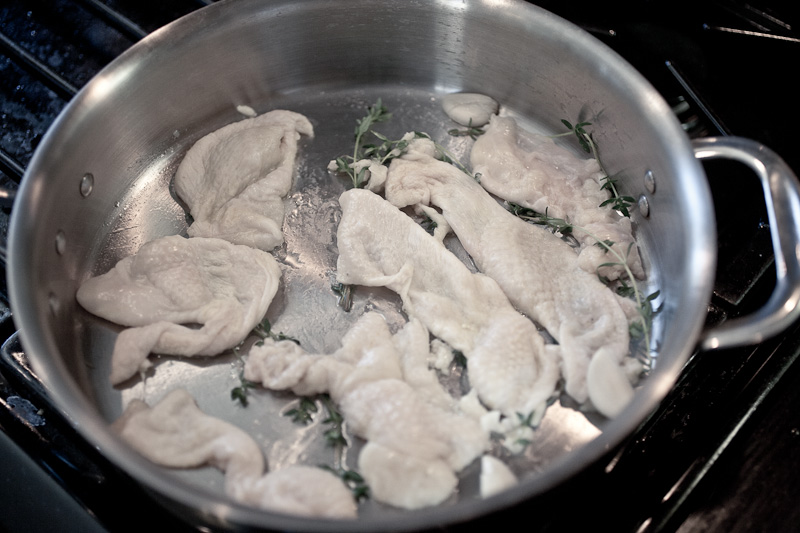
What you end up with is totally badass: chicken skin ‘potato chips’. All the fat renders away and the skin crisps up. My kitchen smelled strongly of a beautiful roast chicken. The skin is minced up into a find chicken skin powder.
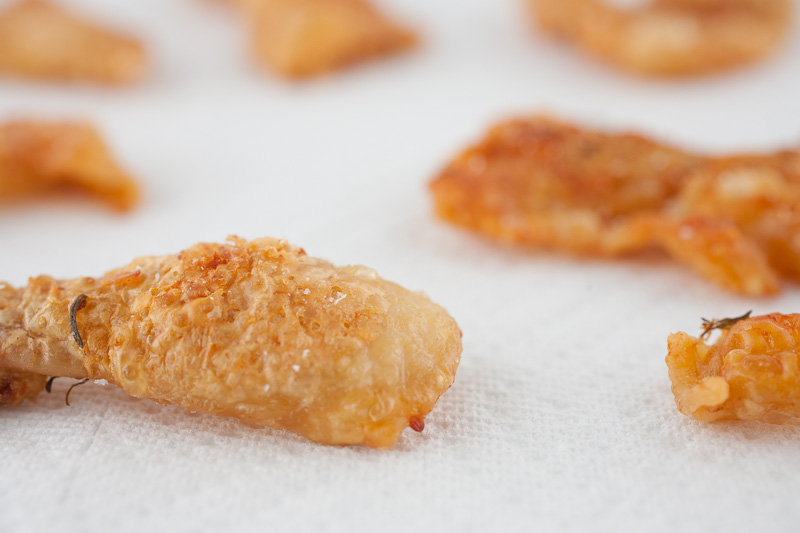
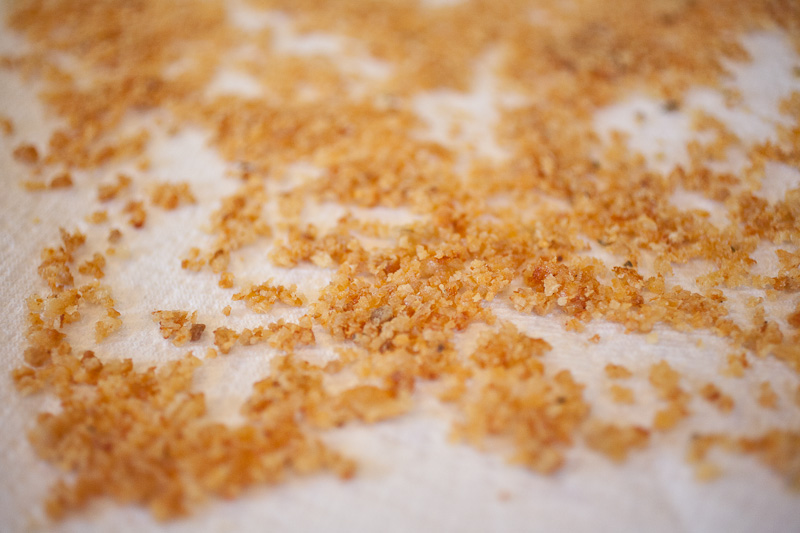
For the corn component, I used freeze-dried corn and crushed it into a fine corn powder with my mortar and pestle.
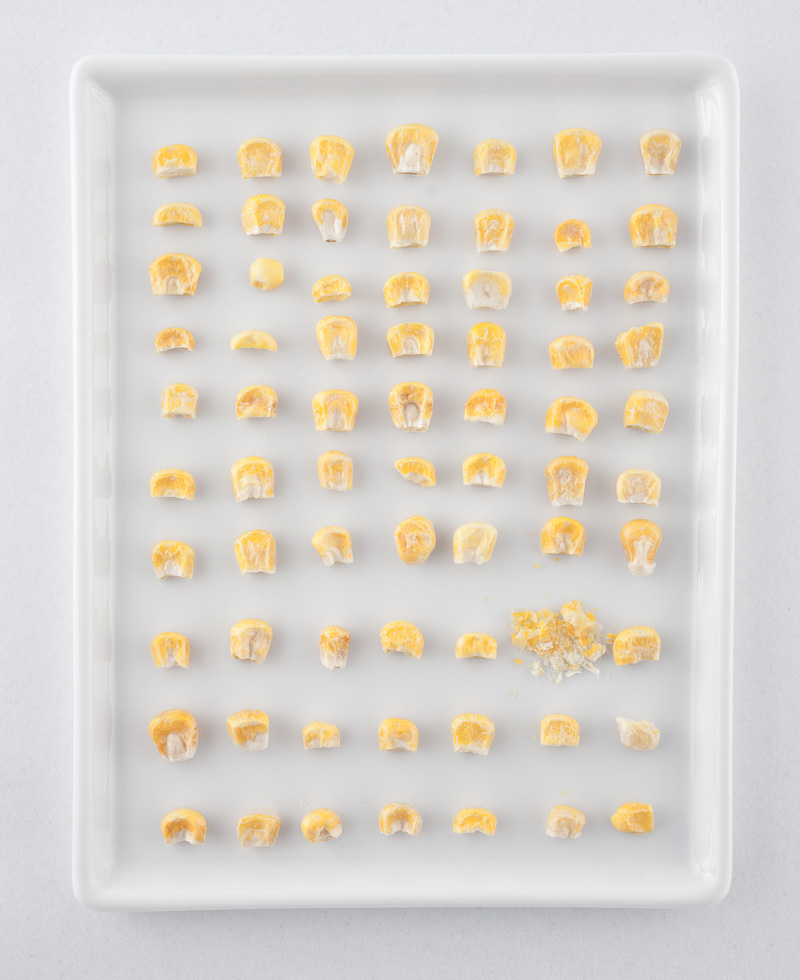
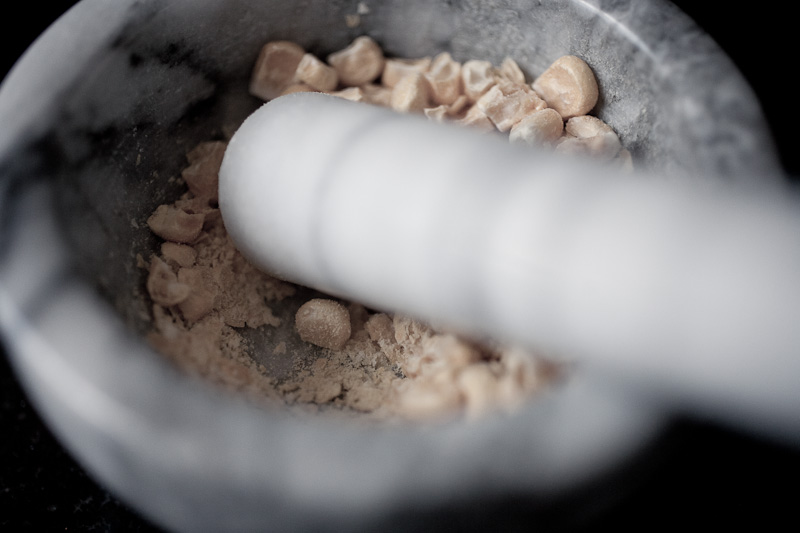
Similarly, I made some toast drizzled with olive oil, salt, and black pepper, and crushed it into a powder as well.
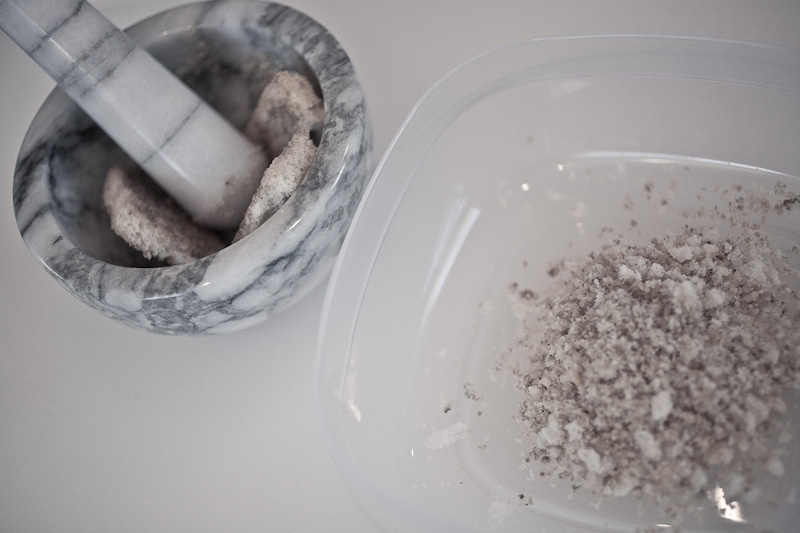
And finally, my beautiful fresh Robin Truffle. I took a bunch of photos of this because, well, it’s my first fresh truffle and I felt like a proud father. After his photo session, this guy was minced into a fine truffle powder and mixed with the rest of the ingredients.
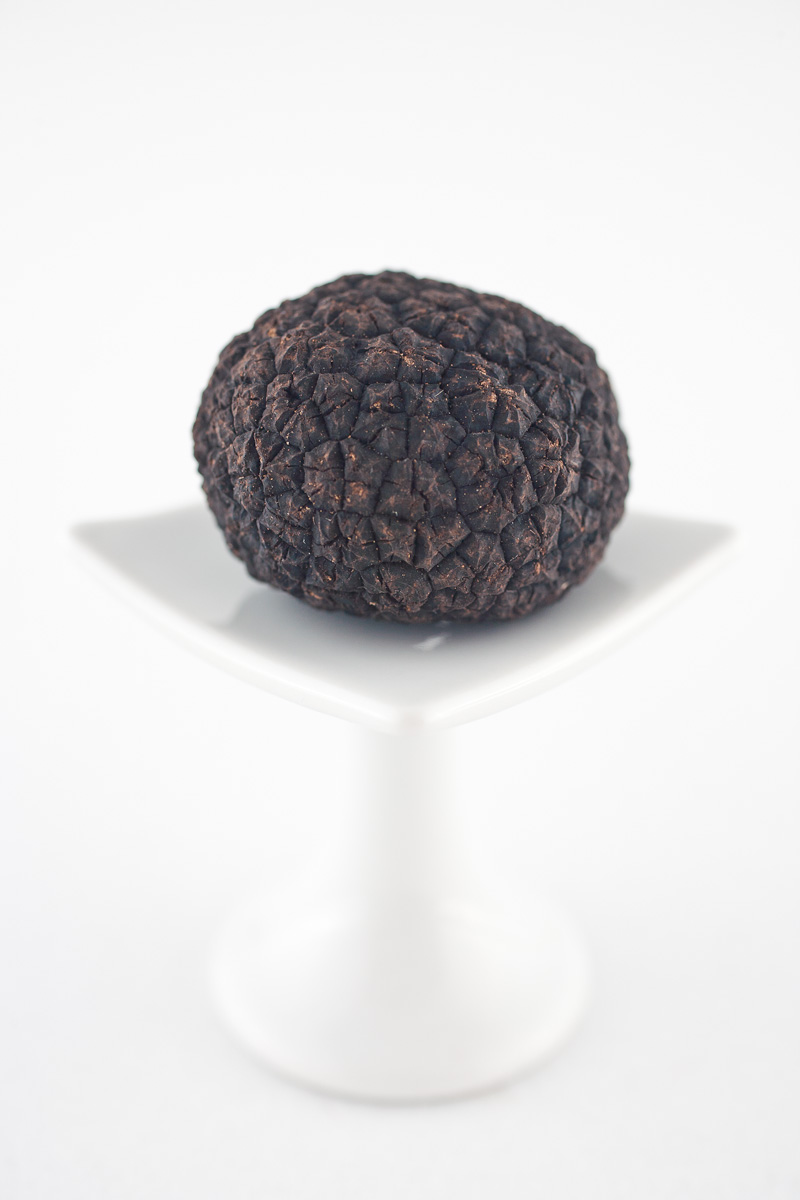
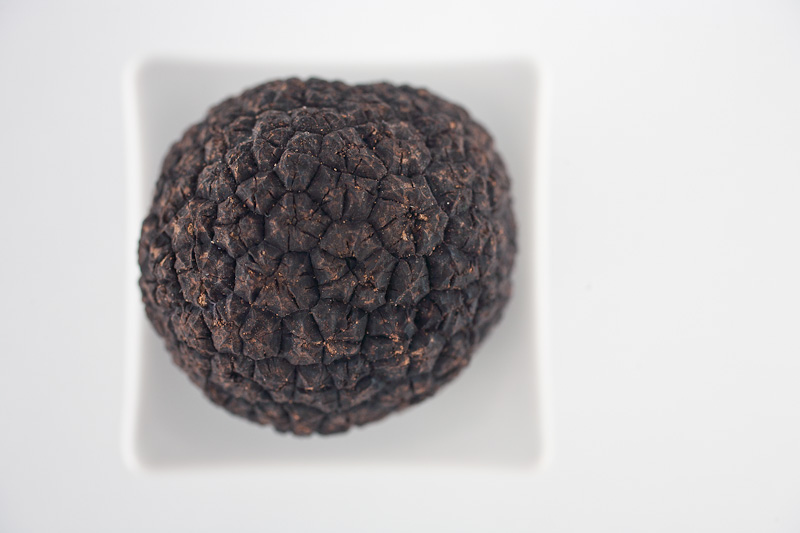
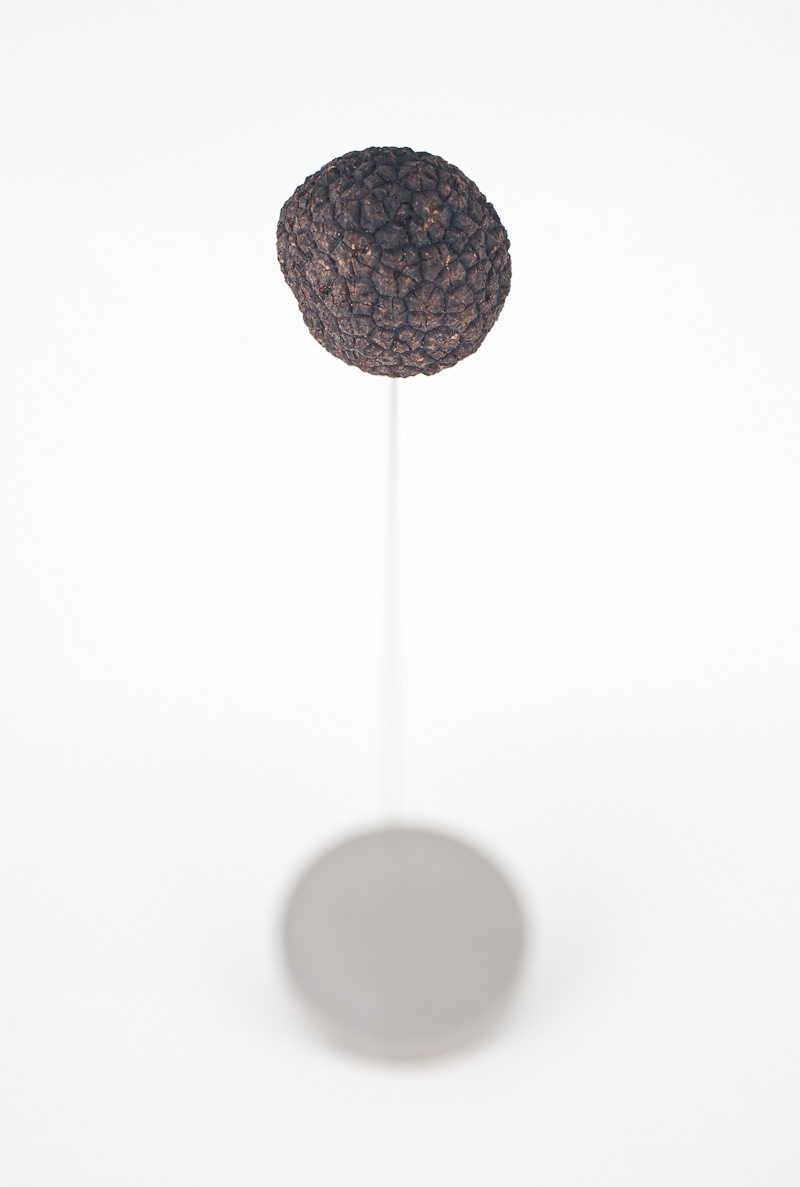
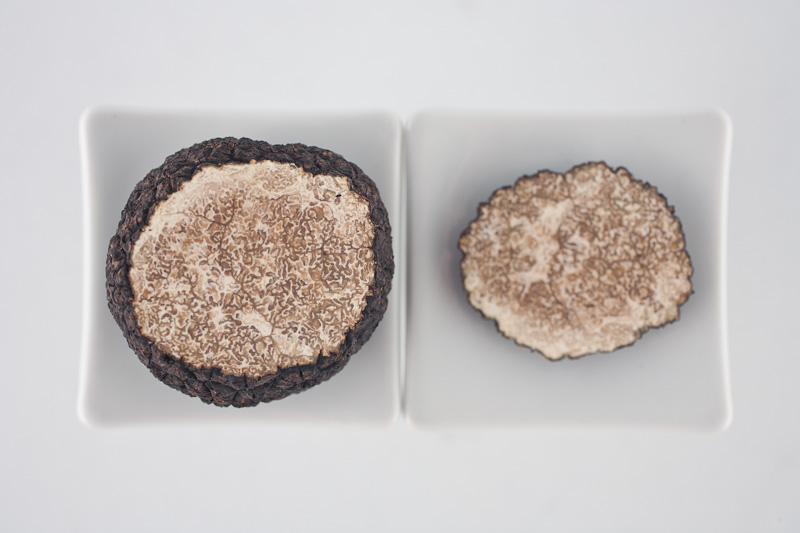
The whole mixture is then pressed into spheres, and placed atop the little dot of black truffle puree.
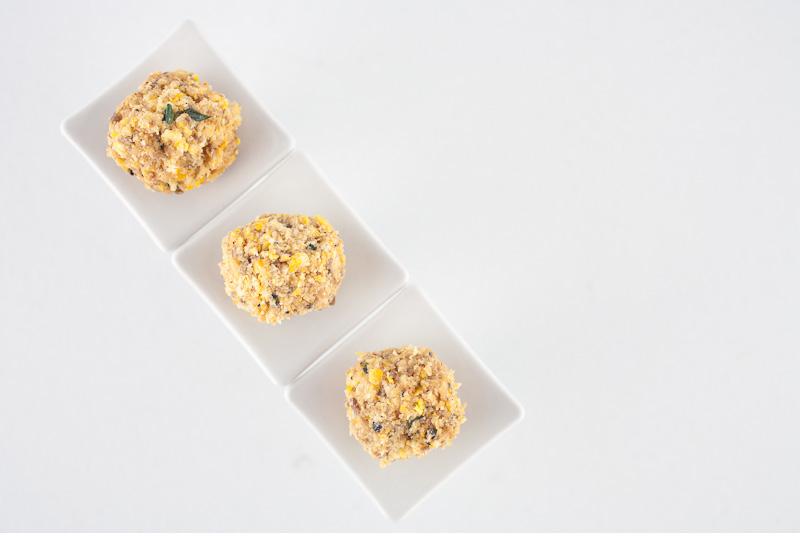
Truffle misadventures aside, this dish is delicious. DELICIOUS. It tastes like summertime and the midwest and fried chicken. The truffle puree was so-so enough that the dish would have been equally-delicious without it, though I suspect if I’d used fresh truffles the puree would have added a deep and complex note to the whole thing that would make it even more special. As it was the puree just added a little subtle complexity, enough to make you go “Huh.” But the rest of it more than made up for it.
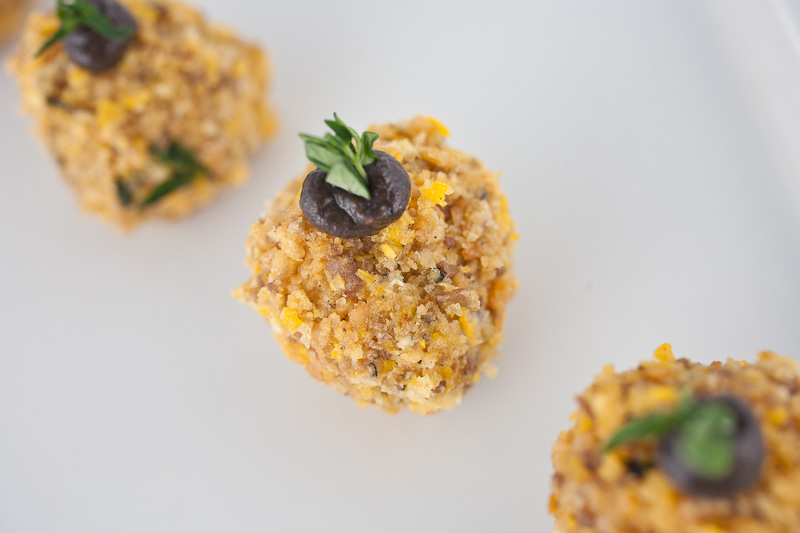
Completion of this dish is also a bit of a milestone for me: as of right now, I’m 50% completed with the Alinea cookbook. I took some photos of the book; beautiful as it was when I got it and it was brand-new, I like how it looks now.
